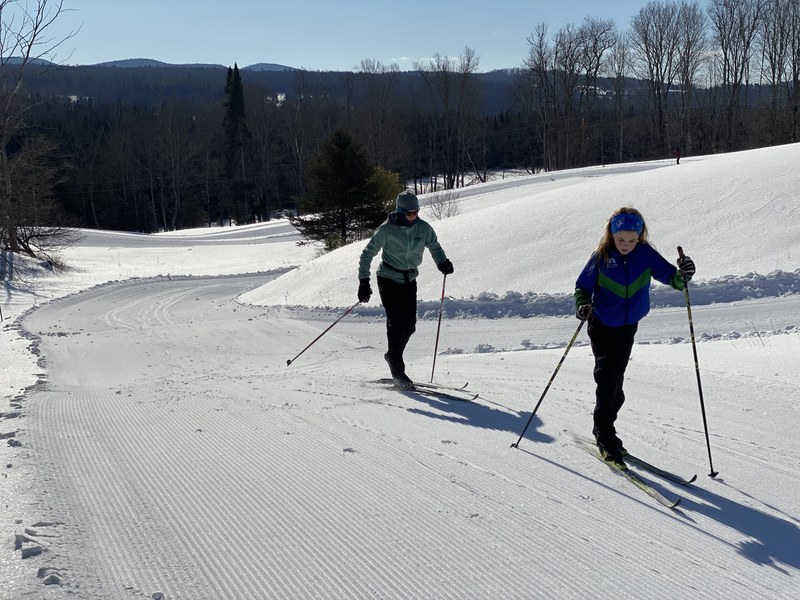Do you have an off season plan?
The off-season, or transition season, can look very different for different people. After a hard racing season, some runners focus on winter sports like cross-country skiing, downhill skiing, and snowshoeing. Some runners move inside and run onto the treadmill while some just run right on through the winter months. Some runners like to spend the winter on the couch.
The benefit of keeping up with some running during the off-season is that you don’t have to spend as much time building your base back up once the warm weather hits. If you have regularly been running 7-8 mile long runs over the course of the winter you will be able to ramp up your mileage sooner than if you take the winter off from running. Even if you remain active over the winter and your cardiovascular system is strong, it will likely take your musculoskeletal system some time to get used to the pounding of running. Our heart and lungs adapt more quickly than our bones, muscles, ligaments, and tendons. That is why you have to slowly build miles.
Winter is a great time to embrace cross-training to help avoid overuse injuries. I spend as much time as possible on cross-country skis in the winter. It keeps me in great cardiovascular shape, builds upper body strength, and my body enjoys a break from the constant pounding of running. It is also a ton of fun! The other piece I focus on in the off-season is strength training. When I’m running a lot of miles, it’s hard to fit in as much strength training as I’d like because I don’t want sore and tired muscles to negatively affect my running. Two or sometimes even only one day a week is the most my body can handle when I’m at the height of my running season.
The time of year that I focus the most on strength training is late fall/ early winter. Here in Maine, November is prime strength training time. Ski season hasn’t really started yet and I am running for fun, not for a specific race. I like to ramp up to three solid strength sessions a week. For me, this includes a mix of exercises designed to support my running, build upper body strength for ski season, maintain body density, and keep my core strong for overall fitness and resiliency. I focus on low rep and high weight. This means I use enough weight so that after 4-6 reps, I am close to maxed out. The old days of high rep, low weight have been proven to not be terribly effective at building muscle strength and bone density.
Why am concerned about bone density, you ask? Running is only okay at building bone density. Add in the difficulty of getting in enough calories when running high miles, and we runners are likely not doing a great job of maintaining bone density as we age – especially women. Lifting heavy and incorporating plyometric exercises are great ways to maintain bone density.
So what does my off-season strength training look like? As I mentioned, I focus on low rep and high weight. To support my running (and skiing) I do a lot of one-leg exercises like a single-leg deadlift, weighted lunges, and weighted single-leg squats. Runners spend a lot of time on one leg, so building one-leg strength is important. I include plank work to strengthen my core – plank, side plank, plank bird dog, etc. For upper body strength specific to cross-country skiing I work on pushups, pullups, and supine ring rows. Sometimes I will include a plyometric jump circuit at the end of my strength training, sometimes I’ll fit it in after an easy run. A plyo jump circuit could include 45 seconds of jumping jacks, followed by 15 seconds of rest, 45 seconds of jump squats, followed by 15 seconds of rest, and 45 seconds of side hurdle hops. After a few minutes of rest, I might do this circuit once or twice more. It gets my heart rate going, gets my whole body used to moving quickly, and asks a lot of my muscles.
Regardless of how you tackle your off-season, be sure to spend some time thinking about your next goal race. You want to be sure to leave yourself enough time to train for your goal race without having to scramble to fit in the necessary miles. If you don’t run over the winter, you’ll need to budget more time for your base period than if you keep running over the winter. For a marathon or longer, you should budget at least 6 months of training to get yourself ready for your goal race. Once you’ve picked your goal race, set yourself up for success and count back the necessary months so you know when you need to start training. Don’t leave yourself scrambling to ramp up your mileage in preparation for your race.
I encourage you to look at your off-season as an opportunity. It is an opportunity to have fun doing some different sports, maybe take some of the race pressure off, build strength and resilience, and keep your body fit for your next big running goal. Good luck and have fun!

